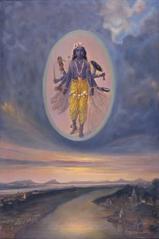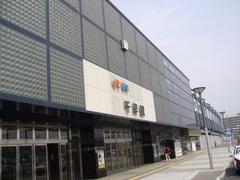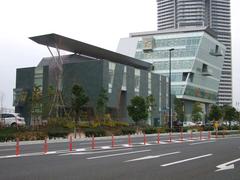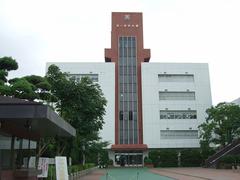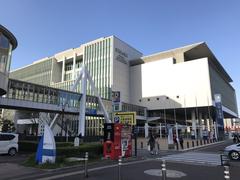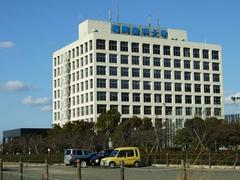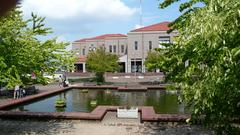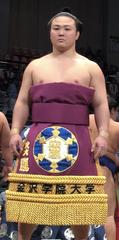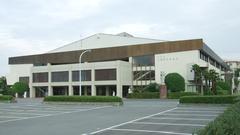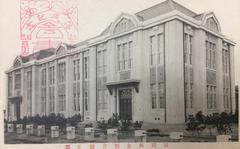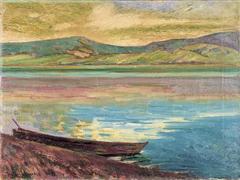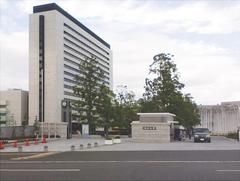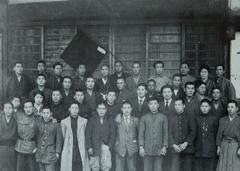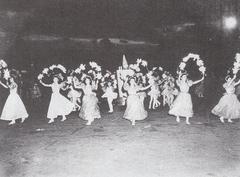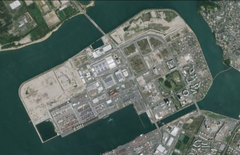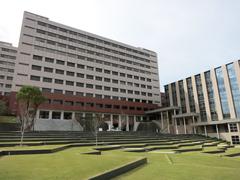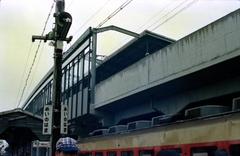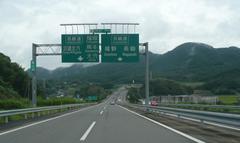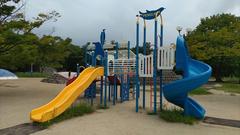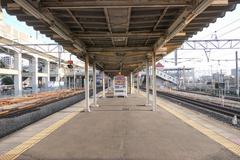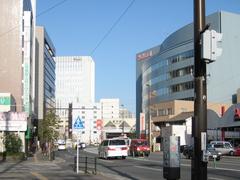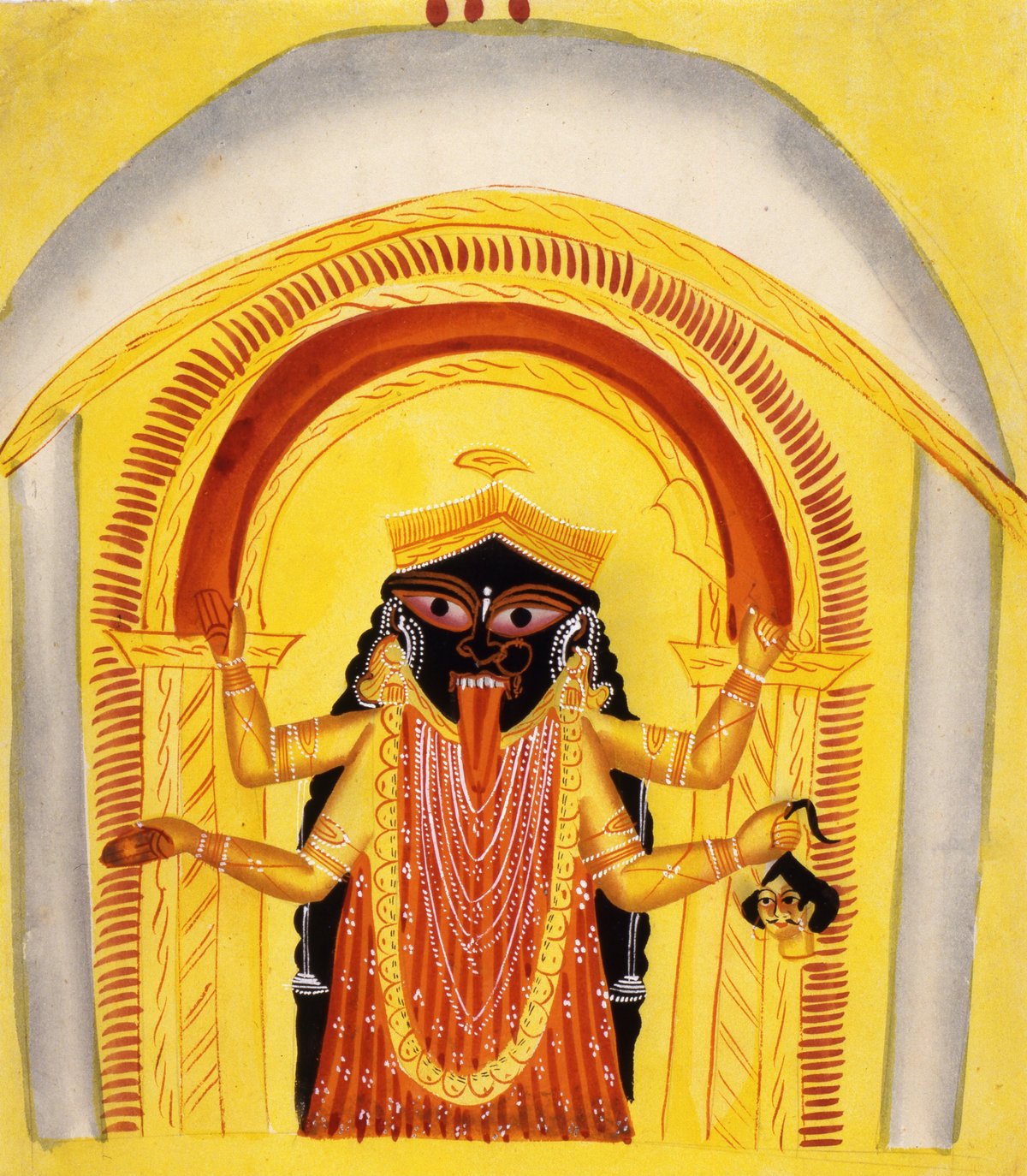
Fukuoka Asian Art Museum Visiting Guide: Tickets, Hours, and Tips
Date: 15/06/2025
Introduction
The Fukuoka Asian Art Museum (FAAM) is a distinctive cultural destination in the heart of Fukuoka City, Japan. Renowned as the only museum in the country dedicated exclusively to modern and contemporary Asian art, FAAM boasts a collection of approximately 5,000 works from 23 countries and regions, spanning a wide range of media and themes. The museum aims to foster cross-cultural dialogue, highlight Asia’s dynamic art scene, and provide an inclusive, engaging experience for all visitors.
Conveniently located near the lively districts of Tenjin and Hakata and easily accessible by public transportation, FAAM is an ideal stop for both local and international visitors. The museum features extensive facilities, from accessible entrances and multilingual guides to family programs and artist residencies. Exciting expansions under the “Fukuoka Art Next” initiative promise to further enhance its offerings and cement its position as a leading hub for Asian contemporary art.
This comprehensive guide covers everything you need to plan a memorable visit, including updated hours, ticketing, must-see highlights, nearby attractions, and tips for making the most of your museum experience.
For the latest information, always refer to the official Fukuoka Asian Art Museum website and the Fukuoka Leap Up cultural report.
Quick Guide: Contents
- About the Museum
- Visiting Hours and Tickets
- Getting There
- Collection Highlights and Themes
- Artist-in-Residence Program
- Digital and Educational Resources
- Expansion Plans
- Nearby Attractions
- Visitor Tips
- FAQ
- Conclusion and Recommendations
- Sources
About the Fukuoka Asian Art Museum
FAAM is Japan’s premier institution focusing solely on modern and contemporary Asian art. Unlike most Japanese museums, which typically emphasize either Japanese or Western art, FAAM’s collection highlights the diversity and creativity of artists from across Asia, with a particular emphasis on countries and regions often underrepresented in the global art world. The museum’s multidimensional approach spans painting, sculpture, installation, photography, video, and mixed media, offering rich perspectives on themes such as tradition, modernity, identity, memory, and social change.
FAAM is also a center for community engagement, hosting regular workshops, lectures, artist residencies, and family-friendly programming. Its commitment to accessibility and education ensures a welcoming experience for visitors of all backgrounds and ages.
Visiting Hours and Tickets
Opening Hours:
- Tuesday to Sunday: 10:00 AM – 8:00 PM
- Closed Mondays (open if Monday is a public holiday; closed next day instead)
- Closed during the New Year holidays (December 29 – January 3)
- Special exhibition hours may vary—check the official website before your visit.
Admission:
- General Admission: ¥300
- University Students: ¥150
- High School Students and Younger: Free
- Group Discounts: Available for parties of 20 or more
- Special Exhibitions: Additional charges may apply
- Tickets: Purchase at the museum entrance or online via the official website
Accessibility:
- Fully accessible with ramps, elevators, and accessible restrooms
- Stroller rentals and priority parking available
- Multilingual guides and information panels
Location and How to Get There
Address: 1-6-10 Tenjin, Chuo-ku, Fukuoka 810-0001, Japan
Access:
- Subway: Nakasu-Kawabata Station (Kuko and Hakozaki Lines), Exit 6, 5-minute walk
- Bus: Numerous city lines serve Tenjin and Hakata; check local schedules
- Riverain Center Building: FAAM is on the 7th and 8th floors
- Parking: Ample parking nearby
Map:
(Insert map image or refer to the official directions)
Collection Highlights and Themes
Scope and Composition
FAAM’s collection features approximately 5,000 works from across Asia (FAAM official site), with an emphasis on works that express traditional Asian aesthetics in contemporary forms. The museum’s acquisition philosophy prioritizes authentic regional expression over imitation of Western styles (Japan Travel).
Key Themes
Modernity and Tradition
Artists like Lee Ufan and Lin Tianmiao reinterpret traditional Asian motifs and materials with avant-garde techniques, highlighting the ongoing dialogue between heritage and innovation (FAAM Best Collection Exhibition).
Identity and Memory
Works by Zhang Xiaogang and Dinh Q. Le delve into personal and collective histories, exploring questions of identity, diaspora, and belonging.
Social and Political Commentary
Artists such as Fang Lijun and Rasheed Araeen challenge viewers with works that reflect on political change, migration, and societal structures.
Material Innovation
Innovators like Lee Bul and Cai Guoqiang push boundaries by incorporating unconventional materials, such as industrial elements or gunpowder, to create immersive experiences.
Notable Collection Highlights
- Fang Lijun, Series 2 No.3 (1992): Cynical Realism from China
- Rasheed Araeen, Tigris (1992): Abstract explorations of migration
- Lin Tianmiao, Spawn #3 (2001): Textile-based feminist installation
- N.N. Rimzon, The Inner Voice (1992): Spiritual sculpture
- Lee Ufan, From Line (1977): Minimalist meditation on materiality
- Lee Bul, Chrysalis (2000): Futuristic sculpture
- Zhang Xiaogang, Painter with Mother as a Young Woman (1993): Evocative portraiture
- Cai Guoqiang, I am an Extraterrestrial (1990): Gunpowder-based conceptual work
- Dinh Q. Le, South China Sea Pishkun (2009): Video installation on migration
- Nalini Malani, Despoiled Shore (1993): Mixed-media exploration of myth and feminism
Artist-in-Residence Program
Since 1999, FAAM has hosted a dynamic Artist-in-Residence Program, inviting artists and curators from across Asia to live, work, and engage with Fukuoka’s community (FAAM Residence Program). The program is based at Artist Cafe Fukuoka (ACF), located in a repurposed school, and annually welcomes 8–9 artists for three-month residencies. Residents present public workshops and exhibitions, fostering direct cultural exchange (FAAM News).
Digital and Educational Resources
- Virtual Museum: Explore curated highlights and thematic exhibitions online (FAAM Virtual Museum)
- Asian Art Resource Room: Over 60,000 volumes for research and education
- Family Programs: Interactive workshops and a dedicated Kid’s Corner for young visitors
Expansion Plans: “Fukuoka Art Next” Initiative
Vision and Scope
Celebrating its 25th anniversary in 2024, FAAM is set for a major expansion as part of the “Fukuoka Art Next” (FaN) initiative. The expansion will increase exhibition space, modernize artist residency facilities, and strengthen the museum’s role as a cultural catalyst (Fukuoka Leap Up).
Proposed Location
The new space is planned for the former underground parking area in Kego Park, at the heart of Tenjin. This move will anchor FAAM in a vibrant commercial and entertainment district, bringing art directly into the city’s daily life (Fukuoka Leap Up; Japan Travel Navitime).
Infrastructure and Accessibility
The expansion will build on FAAM’s current 9,101 square meters and offer enhanced accessibility for all visitors (Crossroad Fukuoka).
Community Impact
FAAM’s growth will also support local businesses, educational programs, and lifelong learning, reinforcing Fukuoka as a gateway to Asian contemporary art (Japan Journeys).
Timeline
As of June 2025, planning and fundraising are underway. Construction at Kego Park is anticipated within several years, with completion expected before 2030 (Fukuoka Leap Up).
Nearby Attractions
- Canal City Hakata: Shopping and entertainment, 10 minutes on foot
- Kushida Shrine: Historic Shinto site, 15 minutes on foot
- Fukuoka Castle Ruins: Scenic park with historical remains
- Ohori Park: Tranquil Japanese gardens and teahouse
Visitor Tips
- Visit early for a quieter experience, especially on weekends.
- Combine your museum trip with a stroll around Nakasu Island for local cuisine and nightlife.
- Check the museum’s website for current exhibitions and event schedules.
- Guided tours are offered on weekends and by prior arrangement for groups.
- Photography is permitted in certain areas; always check signage or consult staff.
- Make use of the Virtual Museum for pre-visit planning or post-visit reflection.
Frequently Asked Questions (FAQ)
Q: What are the museum’s opening hours?
A: Tuesday to Sunday, 10:00 AM – 8:00 PM; closed Mondays (or following day if Monday is a public holiday).
Q: How do I buy tickets?
A: At the entrance or online via the official website.
Q: Is the museum accessible?
A: Yes, with ramps, elevators, accessible restrooms, and services for visitors with disabilities.
Q: Are guided tours available?
A: Yes, on weekends and by appointment for groups.
Q: Where is FAAM located?
A: 7th and 8th floors, Riverain Center Building, near Nakasu-Kawabata Station (Exit 6).
Q: Can I take photos inside?
A: Photography is permitted in designated areas; please confirm with staff.
Conclusion and Visiting Recommendations
The Fukuoka Asian Art Museum is an essential destination for anyone interested in the vibrant world of Asian contemporary art. With its comprehensive collection, engaging programs, and dedication to accessibility and innovation, FAAM offers a rich and memorable visitor experience. The upcoming expansion promises even greater opportunities to engage with art, artists, and the Fukuoka community.
Enhance your trip by exploring nearby cultural landmarks, joining guided tours, and utilizing digital resources. Stay updated by checking the FAAM official website and following their social media.
For the best experience, consider downloading the Audiala mobile app for expert audio guides and museum content.
Sources and Further Reading
- Fukuoka Asian Art Museum Official Website
- Fukuoka Leap Up Cultural Report
- Japan Travel
- Crossroad Fukuoka
- Japan Journeys
- FAAM Best Collection Exhibition
- FAAM Residence Program
- FAAM News
- FAAM Virtual Museum
- Japan Travel Navitime

